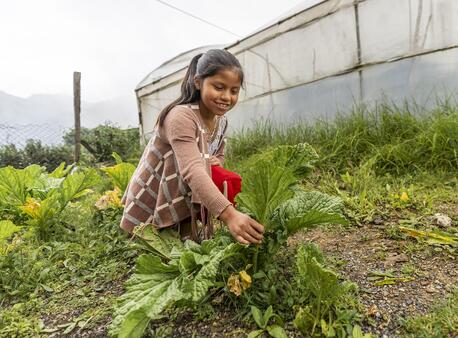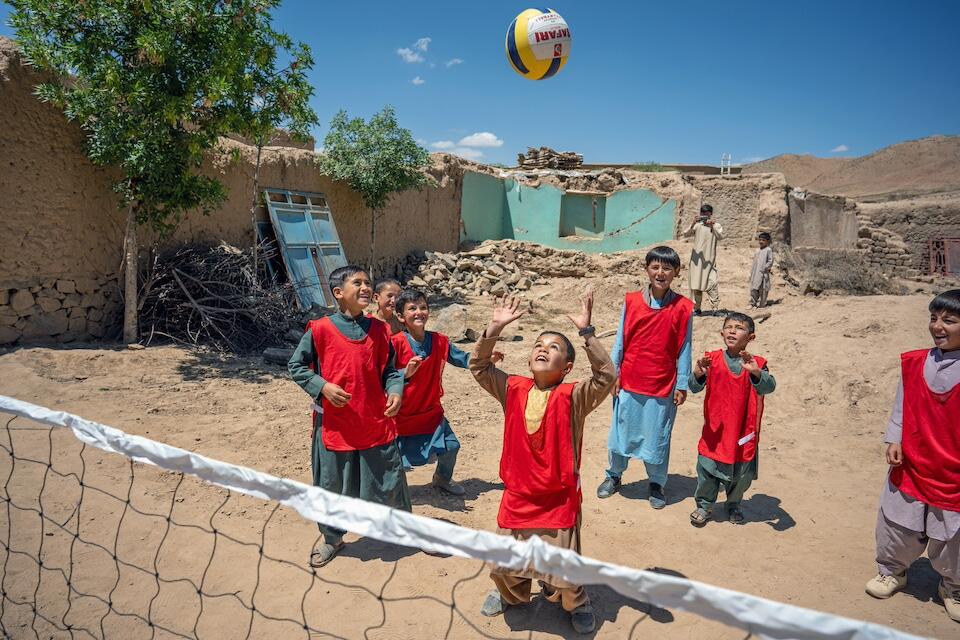
State of the World's Children 2024: The Future of Childhood in a Changing World
UNICEF's latest flagship report examines three major global forces impacting children's lives — population shifts, the climate crisis and disruptive technologies — and what world leaders need to consider as they plan for the future.
Crises threatening children's rights set to intensify in years to come
The future of childhood hangs in the balance if urgent action is not taken to safeguard children's rights in a changing world, UNICEF warned in its flagship report released on Nov. 20, World Children's Day.
The State of the World’s Children 2024: The Future of Childhood in a Changing World examines three powerful, long-term global forces — or "megatrends" — that will profoundly affect children’s lives between now and 2050 and beyond.
Understanding these forces and their implications for children, the report states, is important to better grasp the challenges and opportunities that lie ahead. They are:
Demographic change
Significant population shifts are expected to occur by the 2050s. Some regions may see a boost to their economic growth as working-age populations grow and child populations shrink. Others regions will have to balance the needs of an aging population against maintaining child-focused services.
Climate and environmental crises
In the decade of 2050-2059, eight times as many children will be exposed to extreme heat waves, three times as many will be exposed to extreme river floods and nearly twice as many will be exposed to extreme wildfires compared to the 2000s, the report projects. How these climate hazards impact children will be determined by age, health, socioeconomic setting and access to resources.
Targeted environmental action will be needed to protect children and mitigate their climate risks.
Breakthrough technologies
Artificial intelligence (AI) and other frontier technologies offer both promise and peril for children, while the digital divide remains stark, with over 95 percent of the population of high-income countries connected to the internet vs. less than 26 percent in low-income countries, the report notes.
Many young people in both low- and middle-income countries have difficulty accessing digital skills — which will negatively impact their ability to effectively and responsibly use digital tools in education and future workplaces.
Increased investment in education and public health and more stringent environmental protection needed to protect gains, improve outcomes for children
The SOWC 2024 report offers three scenarios for how these trends could converge with other forces to shape childhood a quarter century from now.
The first assumes business as usual; the second looks at accelerated development through increased social investment and focus on sustainability. The third projects delayed development due to underinvestment and greater global fragmentation. (UNICEF commissioned the Wittgenstein Center for Demography and Global Human Capital to do the analysis; the scenarios are possible outcomes, not predictions.)
“The projections in this report demonstrate that the decisions world leaders make today – or fail to make – define the world children will inherit," UNICEF Executive Director Catherine Russell said. "Creating a better future in 2050 requires more than just imagination, it requires action. Decades of progress, particularly for girls, are under threat.”
The projections in this report demonstrate that the decisions world leaders make today – or fail to make – define the world children will inherit... Decades of progress, particularly for girls, are under threat. — UNICEF Executive Director Catherine Russell
There is some good news. Life expectancy at birth is projected to increase. Gains in children's access to education over the past 100 years are expected to continue — by the 2050s, 96 percent of children globally are projected to complete primary school, up from 80 percent in the 2000s.
Outcomes for children could improve significantly, the report states — provided there is increased investment in education and public health and more stringent environmental protection.

To ensure continued progress, child rights as outlined in the United Nations Convention on the Rights of the Child must be front and center of all strategies, policies and actions, the report argues. Meeting future challenges and opportunities will require:
- investing in education, services, and sustainable and resilient cities for children
- expanding climate resilience in infrastructure, technology, essential services and social support systems
- delivering connectivity and safe technology design for all children
“We can shape a better future for tomorrow’s children," Russell said. "We have to get started today."
Access the full report. An executive summary is also available.
Learn more about what UNICEF does to create a more equitable world where every child is healthy, educated, protected and respected.
Support UNICEF. Donate today.